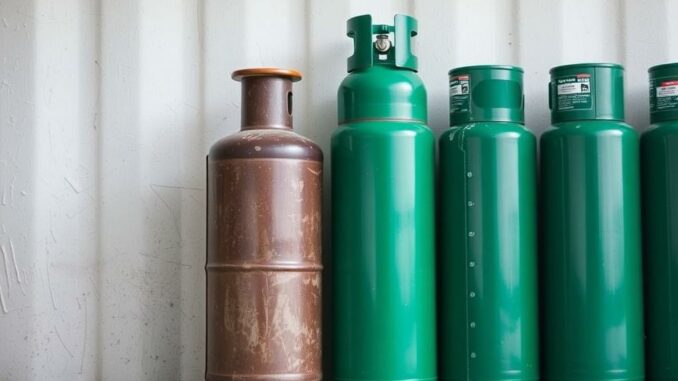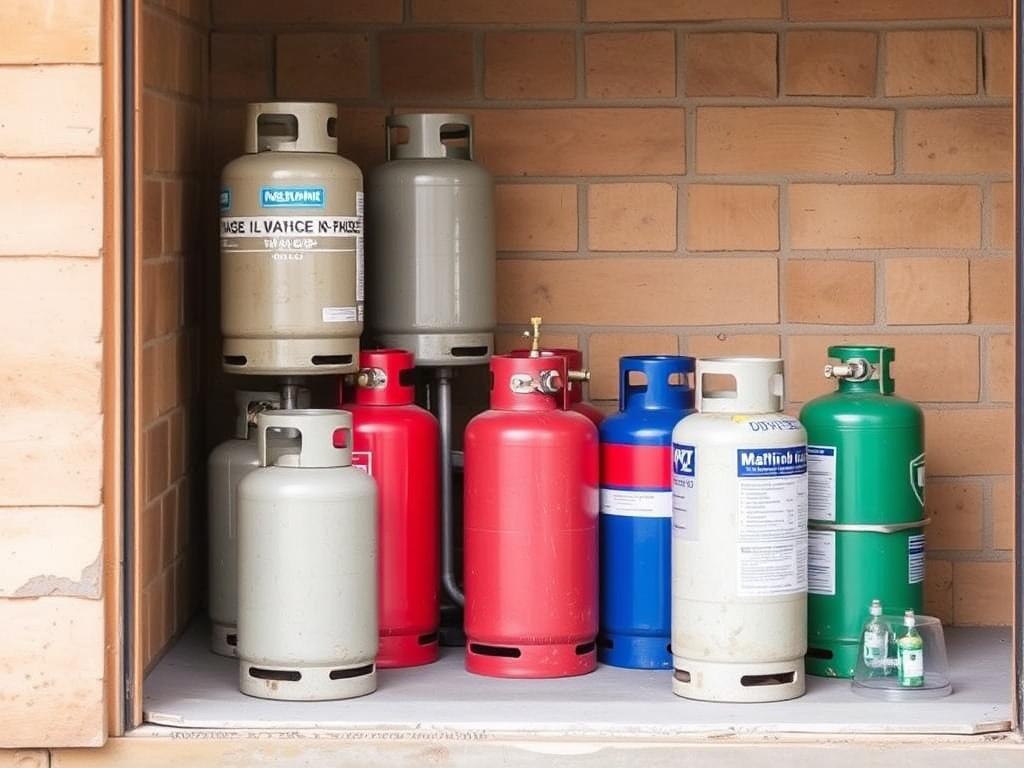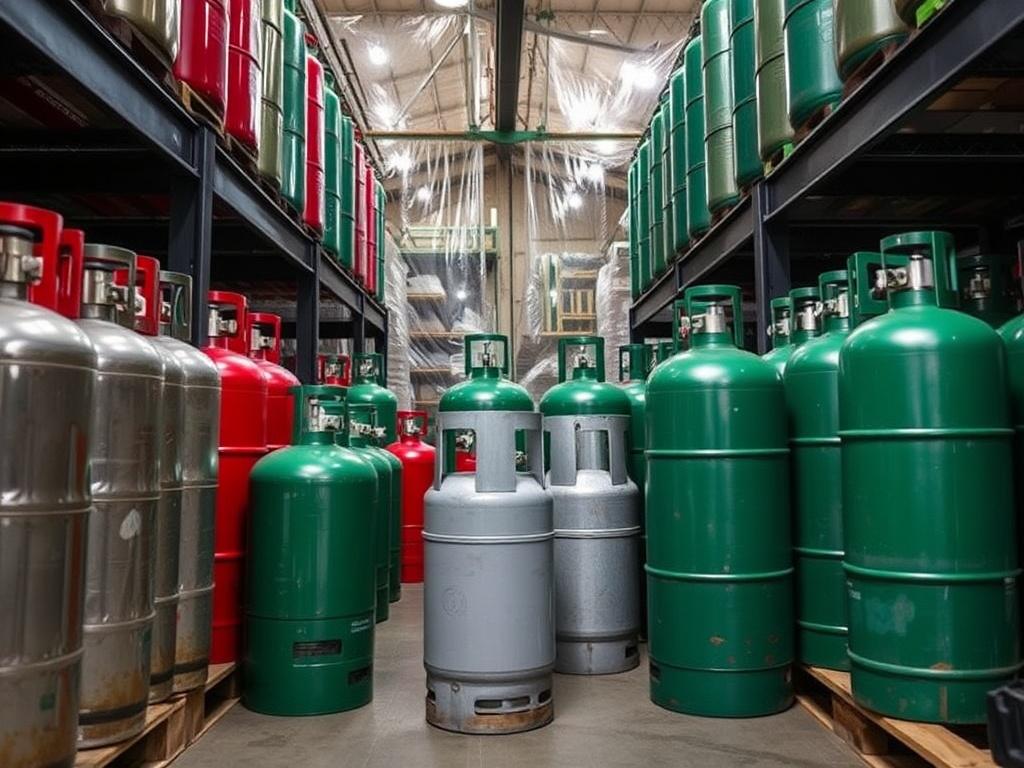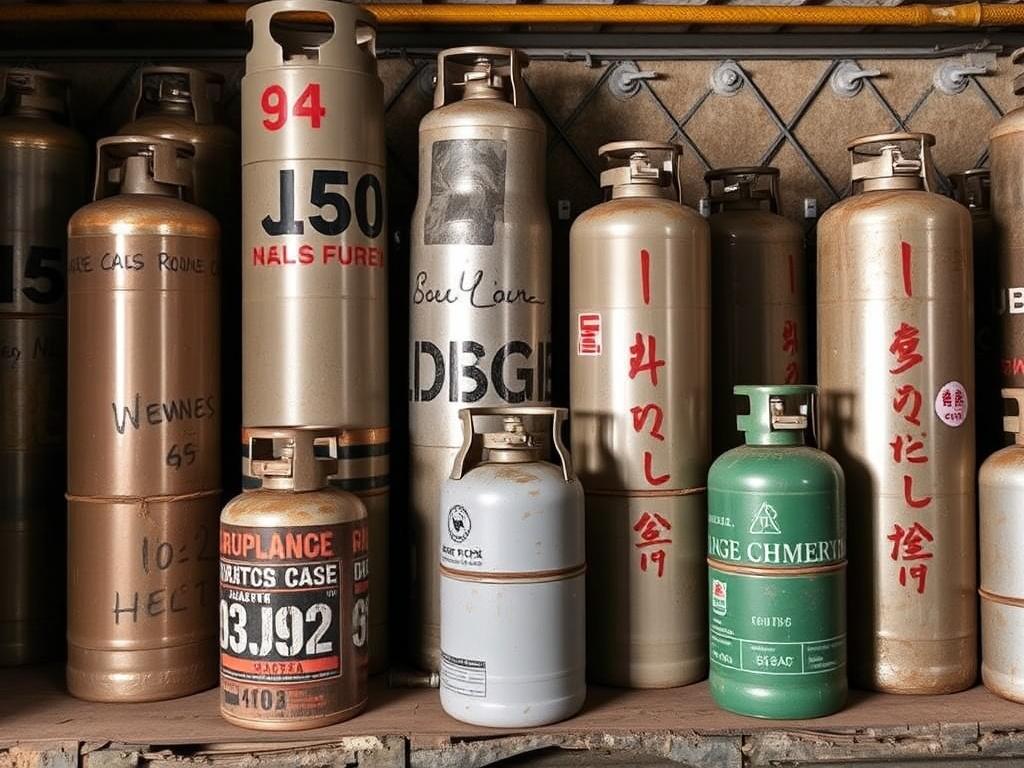
Gas cylinders are essential in many industries and households, providing energy for welding, heating, cooking, and more. However, storing gas cylinders safely is critical to prevent accidents, injuries, or even catastrophic explosions. Whether you’re a homeowner using propane tanks for your grill or a professional managing industrial gases, knowing how to store gas cylinders safely is a must.
In this detailed article, we will walk you through everything you need to know about gas cylinder safety—from recognizing different types of cylinders, understanding the risks, following proper storage guidelines, and the best practices to keep you, your family, or your workplace safe.
Understanding Gas Cylinders and Their Hazards
Before diving into storage techniques, it’s vital to understand what gas cylinders are and the inherent dangers they pose. Gas cylinders can be made of steel or aluminum and contain gases under high pressure. The types of gases vary widely, including oxygen, acetylene, propane, butane, carbon dioxide, and many others.
Each gas has specific properties that influence how cylinders should be stored. For example, some gases are flammable, others are toxic or corrosive, and some may support combustion. Knowing these characteristics helps prevent improper storage that can lead to gas leaks, fires, or explosions.
Common Types of Gas Cylinders
| Gas Type | Primary Use | Common Hazards |
|---|---|---|
| Propane | Grilling, heating, fuel | Highly flammable |
| Oxygen | Medical, welding | Supports combustion (non-flammable but oxidizing) |
| Acetylene | Welding and cutting | Highly flammable and unstable under pressure |
| Carbon Dioxide (CO2) | Food industry, firefighting | Asphyxiation risk in high concentrations |
| Butane | Camping fuel, lighter gas | Highly flammable |
Each of these gases demands special attention when it comes to safe storage.
Why Proper Gas Cylinder Storage is Critical
Mismanagement of gas cylinders can lead to leaks, fires, explosions, and exposure to dangerous gases. For example, if a cylinder leaks flammable gas in an enclosed area, it can result in disastrous fires or explosions. Exposure to toxic gases can cause severe health issues or fatalities. Furthermore, cylinders that fall or get damaged can become projectiles due to the pressurized contents.
Regulatory bodies such as OSHA (Occupational Safety and Health Administration) and various local safety codes provide detailed guidelines for safe storage and handling, underscoring the importance of treating gas cylinders with care and respect.
Key Principles for How to Store Gas Cylinders Safely
Now that we understand the nature and risks of gas cylinders, let’s explore clear, actionable guidelines that anyone can follow to store gas cylinders safely. Whether at home, in industrial workshops, or outdoor storage yards, these principles are universal.
1. Store Cylinders in Well-Ventilated Areas
Gas cylinders, especially those containing flammable or toxic gases, should be stored in well-ventilated areas to prevent the accumulation of gas in case of leaks. Ventilation disperses potentially dangerous gases and lowers the risk of fire or poisoning. Avoid storing cylinders in basements, underground spaces, or closed rooms with no fresh air circulation.
2. Keep Cylinders Upright and Secure
Always store gas cylinders in an upright position. This ensures the pressure relief valve functions correctly and prevents the liquid phase of gases (in liquefied gases like propane or butane) from escaping. Secure cylinders with chains, racks, or stands designed to prevent tipping and falling. A fallen cylinder can be damaged or cause injury.
3. Keep Away from Heat Sources and Flames
Cylinders should be stored away from open flames, sparks, heat-producing equipment, and direct sunlight. Heat increases the internal pressure, potentially causing the cylinder to rupture or vent gas dangerously. Maintain a minimum safe distance as per the cylinder’s specific gas requirements—often at least 20 feet from ignition sources.
4. Separate Different Types of Gases
When storing multiple cylinders, separate oxygen cylinders from flammable gas cylinders (e.g., propane, acetylene) by at least 20 feet or use physical barriers. Mixing incompatible gases near each other greatly increases risk.
5. Label and Identify Cylinders Clearly
Labels containing the type of gas, hazards, and handling instructions should always be visible and legible. Never store unlabeled cylinders.
6. Store Cylinders Away from High Traffic Areas
Minimize the risk of cylinders being knocked over or damaged by placing them in designated storage areas away from frequent human traffic or vehicle paths.
7. Protect Cylinders from Weather Elements
When storing cylinders outdoors, use a protective shelter to shield them from rain, snow, and extreme temperatures. Ensure the shelter has proper ventilation and prevents direct sunlight.
8. Inspect Cylinders Regularly
Routine visual inspection of cylinders for corrosion, leaks, or damage is essential. Damaged cylinders should be reported and handled according to safety protocols.
9. Use Proper Handling Equipment
When moving cylinders, use carts or trolleys designed for the job. Never drag, drop, or roll cylinders.
Step-by-Step On How to Store Gas Cylinders Safely

Let’s walk through a practical step-by-step process of how to store gas cylinders safely, incorporating the above principles:
- Choose the Right Storage Location: Pick an outdoor or indoor space that is well-ventilated, shaded, and away from ignition sources and direct sunlight.
- Prepare the Storage Area: Equip the area with sturdy racks or chain systems to secure cylinders upright and prevent tipping.
- Separate Cylinders by Gas Type: Arrange oxygen cylinders separately from flammable gases at a minimum distance of 20 feet or with a fire-resistant barrier at least 5 feet high.
- Label Storage Sections Clearly: Use signage to indicate the type of gases stored and safety precautions.
- Position Cylinders Upright: Place cylinders vertically in the racks and secure them with chains or straps for stability.
- Inspect Cylinders Before Storage: Check valves and body for damage or leaks, and ensure valve caps or plugs are in place.
- Implement No Smoking Policies: Enforce strict “No Smoking” rules in storage areas to prevent ignition.
- Train Personnel: Ensure anyone accessing the storage area is trained on gas hazards, emergency response, and safe handling procedures.
- Keep Fire Extinguishers Nearby: Provide appropriate fire extinguishers close to the storage location as part of emergency preparedness.
Common Mistakes to Avoid When Storing Gas Cylinders
Even with seemingly simple precautions, many common mistakes can compromise safety. Awareness is the first step toward prevention.
- Storing Cylinders in Confined Spaces: Avoid tightly enclosed areas with poor ventilation, such as basements or closets.
- Stacking Cylinders Horizontally: Never store cylinders horizontally or stack them on top of one another, as this risks damage or valve stress.
- Mixing Flammable and Oxidizing Gases: This can create highly dangerous reactions in case of leakage.
- Ignoring Expiry or Inspection Dates: Cylinders should be inspected regularly and taken out of service if they fail safety checks.
- Using Improper Transportation Methods: Dragging or dropping cylinders can cause valve damage and leaks.
- Blocking Access to Cylinders: Always maintain clear pathways for emergency access and ease of inspection.
Legal and Regulatory Requirements for Gas Cylinder Storage

Different countries and regions have laws and regulations governing gas cylinder storage. For example, OSHA in the United States has comprehensive standards shown in 29 CFR 1910.101 and 1910.253. These regulations mandate specific storage distances, signage, and emergency procedures.
Many manufacturers’ guidelines also accompany gas cylinder labels, which should be strictly followed. Consult local fire departments or safety agencies for rules pertinent to your location.
Summary Table of Key Storage Requirements
| Requirement | Details | Source / Reference |
|---|---|---|
| Ventilation | Must be adequate to disperse leaked gases, no confined spaces. | OSHA 29 CFR 1910.253 |
| Separation Distance | Oxygen cylinders minimum 20 ft from flammable gases. | OSHA and NFPA 55 |
| Upright Position | Cylinders stored upright with valve protection caps. | OSHA, Manufacturer instructions |
| Labeling | All cylinders must be clearly labeled with gas content. | DOT Regulations |
| Fire Prevention | No open flames, “No Smoking” signs posted. | NFPA 58 (Propane Storage) |
Handling and Emergency Precautions
Safe storage goes hand in hand with proper handling and being prepared for emergencies:
Handling Tips
- Always check for valve leaks by applying soapy water—never use a flame.
- Open valves slowly and carefully.
- Never tamper with safety devices like pressure relief valves.
- Use protective gloves and safety goggles when handling cylinders.
Emergency Preparedness
In case of leaks or fires involving gas cylinders:
- Evacuate the area immediately if a leak is detected.
- Call emergency services immediately.
- Use fire extinguishers rated for gas fires (Class B or C), if safe to do so.
- Do not attempt to move leaking or damaged cylinders.
- Follow your workplace or household emergency plan.
Special Considerations for Home Users
Storing gas cylinders safely at home, such as propane tanks for barbecuing or heating, comes with unique challenges:
- Outdoor Storage: Keep cylinders outside, never inside garages or enclosed patios.
- Sun Exposure: Store in shaded areas to avoid pressure increase due to heat.
- Distance From Living Areas: Place cylinders away from doors, windows, or vents.
- Proper Connection: Use correct fittings and inspect hoses regularly for cracks.
Advanced Storage Solutions and Innovations
Modern safety technologies are helping improve how we store and monitor gas cylinders:
- Gas Detection Sensors: Installed around storage areas, these sensors provide real-time warnings for leaks.
- Automated Ventilation Systems: Activate ventilation fans when gas is detected to reduce concentration.
- Improved Cylinder Materials: Composite cylinders that are lighter and more damage resistant.
- Secure Storage Lockers: Fire-resistant cages or lockers designed to protect cylinders from tampering or theft.
Final Thoughts: Prioritizing Safety in Gas Cylinder Storage

Knowing how to store gas cylinders safely is crucial, whether you’re a homeowner, industrial worker, or safety manager. The risks can be serious, but with careful attention to ventilation, segregation, cylinder positioning, and regular inspections, these hazards become manageable.
Remember, always follow manufacturer guidelines and legal regulations in your area. Invest in proper equipment and training so everyone handling or near gas cylinders understands potential dangers and emergency responses.
Your safety and the safety of others depend on responsible gas cylinder storage practices. Take these precautions seriously and integrate them into your daily routines. Safe gas cylinder storage protects lives, property, and the environment, making it an essential part of modern life and work.
If you’re ever in doubt, reach out to professional safety consultants or your local fire department—they are valuable resources for assessments and recommendations.
